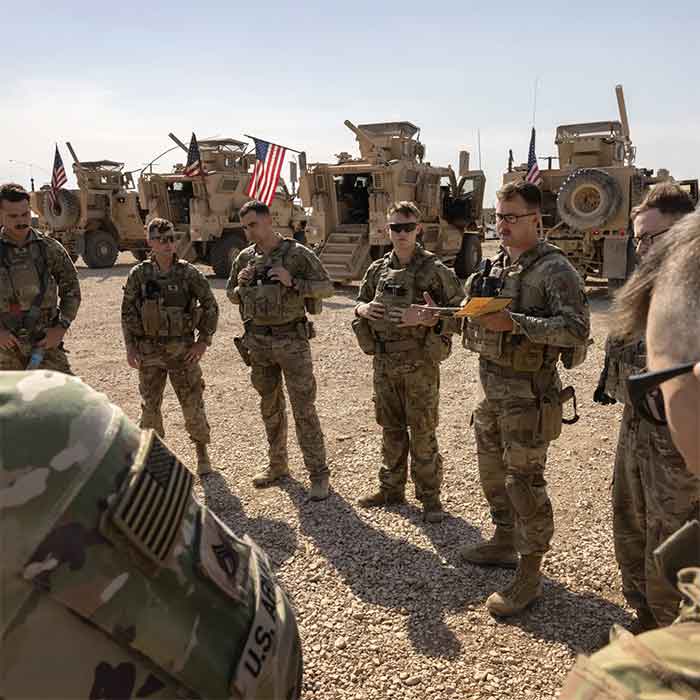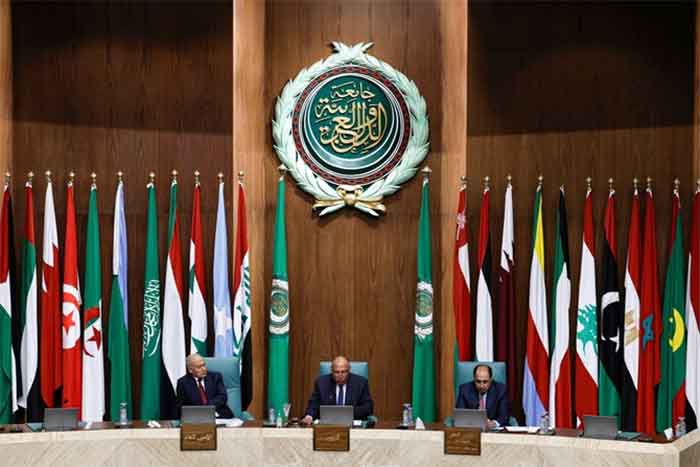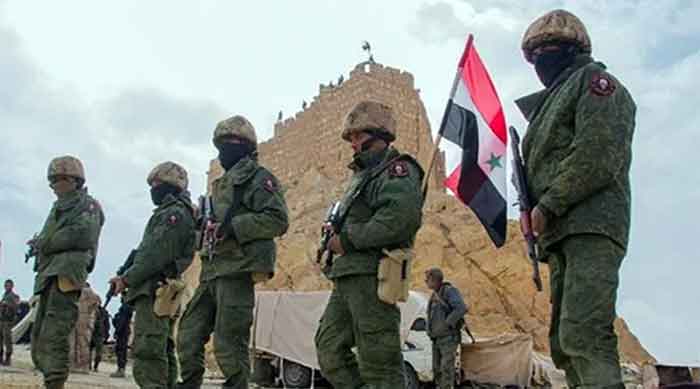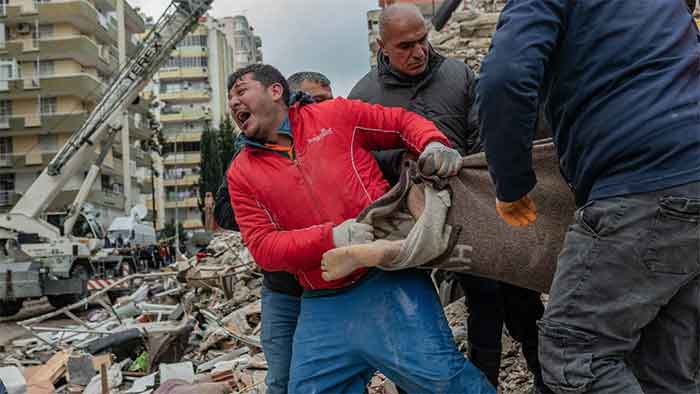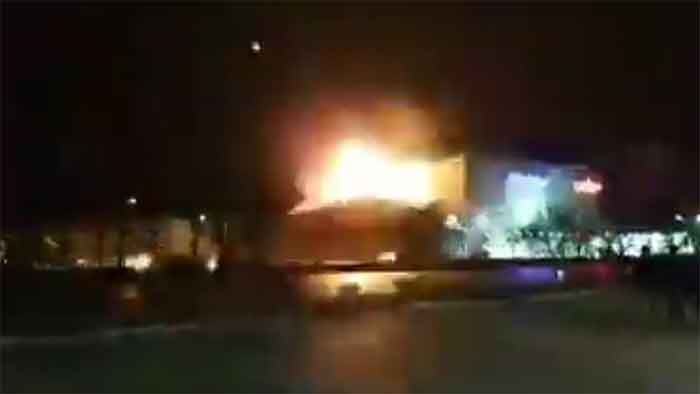
Hama, Syria: Rather than the conventional wisdom of a “wrapping up,” of Syria’s seven years of civil war, this observer calculates that the conflict is on a trajectory to expand during 2018.
Granted, over the past six monthsthere have been perhaps more than a dozen inflated declarations of “Victory.” including 2 or 3 of the “Devine Victory” variety from three governments with deeply intrenched armed forces still fighting the insurgency. Iran, Russia, Syria. Other ‘victory’ claims that the war is over are regularly madeby various proxy militia, including Hezbollah and a dozen Public Mobilization Units (PMU) from as many countries, funded, trained and armed by Iran.
Rebels, many funded from the Gulf, have been largely moot on this subject as they hold maps up to the light and squint at the areas that ISIS have been expelled from which is roughly 90% of its short lived “Caliphate.” The reality is that fighting continues and is spreading.Two of the last areas under the control of rebel forces, are about to be largely destroyed as their opponents conduct Raqqa and Aleppo type saturation bombings with just about every weapon their opponents have access to including, Russian and Syrian warplanes and helicopter dropped indiscriminate barrel bombs, more than 12,000 have been dropped since 2011. These locations, will be main war zones in 2018, and bombed-often indiscriminately- including rural towns and villages across rebel-held southern Idlib province. Eyewitnesses have documented, “napalm” type bombs for a second day on 1/18/2018, as reported by Civil Defense volunteers and residents on the ground and by Syria Direct.
There will be no end to Syria’s civil war in 2018even though foreign armies and militia are still trying to end the March 2011 uprising that ignited spontaneously among teenagers and students putting up makeshift posters and writing graffiti on schoolyard walls in Deraa, south Syria. In some ways the spontaneous demonstrationresembles what erupted in Iran last month.But the Iranian regime employed a more controlled reaction. Unlike the Gadhafi regime’s February 2011 threats that it was going to crush “the rats” opposition in Benghazi and sent in Libya’s army causing the uprising to rapidly spread across the country and leading to his ouster and today’s chaos. Unfortunately, the Syrian government repeated Gadhafi’s miscalculations and the peaceful revolt quickly ignited nationwide and, predictably, foreign opportunists swarmed into the country with a range of agendas. Syria’s current President will also eventually be pushed from power but the timeline is dependent on Iran’s Al Quds Force leader, Qasim Soleimani, the main power-broker in Syria despite Vladimir Putin pursuing that mantle.
Neither the Americans, Iranians, Russians, Syrians, Turks, Israeli’s or other powers and their proxies want Syria’s civil war to end soon. Unless it’s on their terms with guarantees of significant benefits. And that will not happen for the foreseeable future.
Moreover, speculation in this region that Syrian refugees will quite soon be returning to their country soon are not to be credited. Nor that Tourism is returning anytime soon. Not many Syrian refugees are likely to be returning home during 2018. According to Amin Awad, the Middle East Director of UNHCR, the U.N. Refugee Agency, at least 82 percent of Syrian refugees in neighboring countries urgently want to return to their homes in Syria.But they would only attempt a perilous return when security returns.600,000 who are internally displaced inside Syria have returned to cities like Homs, Hama, Aleppo, Raqqa. Deir a Zor and Daraa and other locals while only 22,000 Syrian refugees of nearly seven million from five neighboring countries have returned so far. In point of fact, Syrians daily continue to flee their country for neighboring states, often with great risk. On 1/19/2018 16 Syrians including 6 women and three children were discovered frozen to death near the Syria-Lebanon border crossing at Masnaa having been abandoned in a heavy snow storm by smugglers.
Still, the UN offers impressive numbers of refugees wanting to return home when compared to others, besides Palestinians, where in Lebanon the estimate of those wanting to return to their homes in Palestine is approximately 96 %.
Additionally, the UN’s 82% estimate includes Syrian refugees polled in more comfortable Europe and the Westthus producing a lower figure.
In Lebanon, an informal poll conducted by the Meals for Syrian Refugee Children Lebanon (MSRCL) reveals that nearly 90 % of the refugees who fled the civil war want to return to Syria. And with respect to the lovely Syrian refugee children in Lebanon, playing any day of the week, rain or shine, in Aleppo Park south of Ramlet el Baida beach, well, these angels regularly voteunanimously to return to Syria.Theyjust can’t stand still waiting to return to the homes, families, neighbors friends, and schools they remember and desperately want to rejoin. No one at MSRCL is inclined to challenge their dreams by presenting these innocents with gruesome details of what has become of their country. But as all parents know, kids know a lot and are ready to face seemingly unsurmountable challenges.
A few thousands of the one million Syrians in Lebanon could indeed return in 2018 despite the continuing shelling and bombing. And this observer guesses that a somewhat lower percentage will return home from Jordan, Iraq or Turkey in 2018. Why the return to Syria figures for these three countries may be lower in 2018 is the fact that they treat Syrian refugees, while too often inhumanly, with rather more humanity than does deeply sectarian Lebanon given that 97% of Syrians fleeing to Lebanon are Sunni. Few, if any countries ignore the humanitarian provisions of the 1951 Convention relating to the Status of Refugees and the 1967 Protocol than Lebanon which still refuses, seven decades following its enactment, to join the 146 countries that have obligated themselves to the Refugee Conventions humanitarian provisions.
It’s a truism that the map of Syria’s seven-year conflict has been redrawn and currently favors the Assad government and its Russian and Iranian allies who rescued the regime over the past three years. The government has recaptured population centers in Western Syria from rebels and pushed back Daesh (ISIS) in the East. Its next objective will include tightening“surrender or die sieges” against the civilian population that UN agencies and aid workers claim is a calculated use of starvation and withholding of medical aid as a weapon of war.
Complicating this strategy in this observer’s view is the fact that the main players involved in the civil war in Syria, the regime, Russia, Iran, and the US have desperate goals and increasingly since 2013, all the actors will readily work in 2018 with rebel’s forces, even with ISIS and Al-Qaida to advance their short and long-term battlefield objectives, finances, local security and immediate survival prospects. ISIS and friends will play one off against the others as it has been doing with respect to arms, stolen antiquities, drugs, oil and other natural resources.
It’s been common practice for years in Syria that whether at check points, starve or surrender sniper positions, and military posts, blocking medical supplies and food and water to seriously ill and starving civilians in many areas, that pro-regime and “terrorists” often get along better than do the Russian and Syrian armies with various Iranian forces, who are detested by both for many reasons. In Syria, battle lines are becoming amorphous at the beginning of 2018 as the various proxies pursue their own objectives.
The CIA’s recent release of documents seized during the 2011 raid that assassinated al-Qaida leader Osama bin Laden claims that Iran supported al-Qaida leading up to the Sept. 11 terror attacks. U.S. prosecutors have long argued that Iran formed loose ties starting in 1991, as noted in a 19-page al-Qaida report in Arabic that was included in the recent release of some 47,000 other documents by the CIA. “Anyone who wants to strike America, Iran is ready to support him and help him with their frank and clear rhetoric,” the report reads. The report is dated in the Islamic calendar year 1428 — 2007 and offers a history of al-Qaida’s relationship with Iran. It says Iran offered al-Qaida fighters “money and arms and everything they need, and offered them training in Hezbollah camps in Lebanon, in return for striking American interests in Saudi Arabia.”
The Assad regime most of all wants to stay in power, but to do so they will need to convince the Iranians. The Syrian regime is impotent to impose control over the country because it dependent on decisive military support from Iran and Russia. Syria’s President is arguably no longer sovereign. His regimes ability to take and hold terrain depends on how much military aid, cash, and neglect of Iran’s people and local economies and casualties Iran and Russia are willing and able to accept.
According to Jennifer Cafarella, senior intelligence planner at the Institute for the Study of War in Washington, D.C., the Russians are more concerned than Syrian President Assad about reaching a diplomatic settlement to the war that allows Putin to claim victory and gain international acceptance. Neither Russia nor Assad intends to grant meaningful concessions to the Syrian opposition in 2018 that would weaken the Syrian regime. Russian President Vladimir Putin seeks a diplomatic deal that he can use to claim to be the peacemaker in Syria. Assad would accept a deal that preserves his regime, and is therefore willing to support the process so long as it continues to protect him. He has even rejected Russian proposals to consider concessions for detainee releases. But Russian-Syrian tensions seem to be under control entering 2018. Both Russia and Assad appear willing to work closely together to beef up Assad’s ability to preserve his regime. Their military operations will continue the charade of countering terrorism whether there is diplomatic progress.
Meanwhile, in 2018, Jihadis will try to maximize the cost of fighting in Syria to exploit this vulnerability and will likely retake terrain. Even if they lose it and retake it again. They are in this war against infidels for as long as its takes to honor their commitments to the Koran, one young jihadist explained to this observer earlier this week.
The Russians intend to keep their air and naval bases, seeking to be recognized asthe ‘peacemakers’ and benefit from securing a major chunk of Syrian reconstruction projects over the coming. Decades. The Iran regime will continue to colonize Syria which Tehranaccurately understands is a precondition for Tehran’s regional projects.
Iran also calculates that during 2018 itcan likely contain the unrest among its own population while it gains ever more control of Syria-politically, economically, militarily, demographically and security wise. Applying the “Lebanon Model” that allowed Iran within barely three decades to essentially colonize Lebanon. Syria, Iraq, and Yemen are next on its agenda many in this region believe.
Iranian officials estimate that they need 1 million new jobs per year to dry up the 3.4 million unemployed people. Iran has been missing its earlier targets of 350,000 new jobs per year. Renewed and increased sanctions on Iran, Lebanon, and Syria are unlikely to produce compromise and agreement. Rather, they will produce escalation and entrenchment. The human misery of the region will increase.
Until recently, Iran believed that it had “won” the northern Middle Eastby securing victory for Hezbollah, the Assad regime, and the Shiites of Iraq against ISIS and the Sunni Arab rebels of Syria and Iraq. Nasrallah, Assad and Iraq’s Abadi have all been crowing about illusional long term victories. They believed that they have weathered the storm and will construct a new security paradigm in the Levant that connects pro-Iranian Arab states as part of creating a juggernaut against their Sunni, Israeli, and American nemeses.
As for the US, the Trump administration intends to maintain a military presence in Syria in 2018 by continuing to support its Kurdish allies and, so it claims, to block the re-emergence of IS. It is a long-term open-ended project and one that is concerning American taxpayers.
The Trump administration believes it can handle the Russians and is now focused mainly on containing Iran.Yet Washington understands Russia is not vacating its bases in Syria any time soon.
The renewed US offensive is not so much about Iran’s nuclear capability or even its missile program. It is about Iran’s rollback and destroying its economy. The more money Iran has, the more it can consolidate the gains of its Shiite allies in the region including Hezbollah, the Syrian government and the Iraqi government. The US sanctions regime will also go a long way to turn Syria into a liability for both Iran and Russia rather than an asset. And as with all sanctions the Syrian people, not political leaders will suffer deeply.
In this observer’s opinion, in 2018 Washington will increasingly focus on keeping Damascus weak and divided, presenting Russia and Iran with many economic negatives stemming from their oft-declared “victories. A staffer on the US Senate Foreign Affairs Committee advises that what Trump has is mind, with the help of regional and EU allies, is controlling roughly half of Syria’s energy resources, the Euphrates dam at Tabqa, as well as much of Syria’s most fertile and productive agricultural land. Part of a broader project to keep Syria poor and the Assad regime desperate for natural resources. Keeping Syria poor and unable to finance reconstruction suits short-term US objectives because it will drain Iranian and Russian resources, on which Syria must rely as it struggles to reestablish state services and rebuild when the war winds down.
During his 1/17/2018 speech at Stanford University, Secretary of State Tillerson said the US needs “five key end states for Syria” in 2018 before US troops are withdrawn. These are:
- IS and al-Qaeda in Syria must “suffer a permanent defeat, do not present a threat to the American homeland, and do not resurface in a new form”
- The conflict is resolved through a UN-led process, and “a stable, unified, independent Syria, under post-Assad leadership, is functioning as a state”
- Iranian influence in Syria is diminished and Syria’s neighbors are secure
- Conditions are created so displaced people can begin to return to their homes
- Syria is free of weapons of mass destruction
This observer believes that given what is happening across Syria today, that the odds that any of Washington’s above declared conditions precedent to withdrawal being achieved is zero. None will be achieved in 2018 and a majority will not be achieved in the foreseeable future.
With respect to Turkey and its threats to invade Syria unless the US abandons the Kurds, these threats as of 24 hours ago rang a bit hollow to this observer. Events of 1/21/2018 has proved yet again, my weakness in judging regional events around here.
Here’s one reason.On 1/20/2018, Turkey unleased an air-ground operation against the Syrian Kurdish People’s Protection Units (YPG) to extend Turkey’s buffer zone along the Syrian-Turkish border. This obtuse observer did not think they would. It appears to this observer that the retro Ottomans are getting serious. Forces from Turkey’s Second Army launched a three-pronged ground attack – “Operation Olive Branch” (!!!) against YPG forces northwest of Aleppo City. Turkeys air force andSyrian rebel forces have joined the operation. Turkey claims the right to self-defense under Article 51 of the United Nations Charter as its legal justification for the operation. Turkey’s wants to extend its buffer zone to cut off the YPG’s access to the Turkish border northwest of Aleppo City and will likely pursue the full defeat of YPG forces in the Aleppo countryside after securing the border. Turkey may attack terrain east of Afrin that YPG forces seized in 2016 while the Syrian opposition attempted to defend Aleppo City against a Russian- and Iranian-backed Bashar al Assad regime offensive. Initial Turkish airstrikes bombed the YPG-held Menagh airbase north of Aleppo City on January 20th. These strikes suggest a Turkish intent to seize the airbase and the nearby city of Tel Rifaat.
US efforts at gaining leverage in the region are focused in Northern Syria and training the Syrian Democratic Forces. Washington is promoting Kurdish nationalism in Syria. The Kurds, like all indigenous people who became subsumed by colonizers, have a basic right to self-determination. Whether in Palestine or elsewhere. The US by occupying North Syria plans to deny Damascus access until an honest election is held. Many question this plan. Moreover, many in DC believe that Turkey’s rising Islamism, hardening dictatorship, and threatening rhetoric will only increase in the future. They appear not to hold out much hope that Washington can reverse this trend, but they may well be mistaken. Erdogan is a loose cannon, there are plenty around these days (including this observer) and he warrants watching but not to be taken too seriously as a dependable partner. If Turkey bolts from NATO, many members may say “good riddance let the Russians deal with Ottoman wannebe Erdogan.” Erdogan’s neo-Ottoman, pro-ummah, big brother game is not working in the Middle East. One reason is that Arabs do not wish to revisit their Ottoman colonial past. Or the earlier Persian colonial edition.
Nor is Israel in a hurry to see Syria’s civil war end in 2018. It views that every day of the war Iran and Hezbollah bleed and weaken more. Plus, last week its army intelligence announced, “amazing new technology” that now allows its military to detect and destroy every Hamas tunnel build in Gaza. The IDF, is reportedly working around the clock to finetune this claimed technological breakthrough to be able to target all of Hezbollah’s tunnels and weapons stores in Lebanon and Syria at will.
The IDF believes time is on its side because Iran has become vastly overstretched in Syria and is spending a minimum of 20 million USD every week to supply Hezbollah with missiles and other armaments which Israel insists it can and will destroy with impunity as reported in nearly daily media reports. Iran and Hezbollah can do nothing about Israel’s bombings of their arms convoys and arms depots because above all else Tehran does not want a conflict with Israel which would likely destroy within days its regional ambitions. It is no longer speculative whether Israel claims responsibility for the increasing number of strikes against Iran and Hezbollah in Syria–or doesn’t. According to US Senate staffers who work on this subject matter, VP Mike Pence will discuss during his current trip to Israel preparations to destroy Iranian air, naval and land bases in Syria just as soon as the timing appears propitious.
The increasingly likely Israel/Hezbollah/Iran war istaking form from the fog.
Despite claims that 2018 will see the end of civil war in Syria,Jihadi groups, including Al-Qaeda and remnants of the Islamic State, retain the capability to metastasize within hours across the region and beyond. And to keep this war raging for many years. And who can stop them? As noted above, the Assad regime is unable to control much of Syria because it is dependent on military support and financing from Iran and Russia. Mindful of this, Jihadis will maximize the cost of fighting in Syria to exploit this vulnerability and will retake terrain, even temporarily.
In this observer’s opinion, based also on some long conversations with military officials inside Syria, the conflict will expand during 2018 and perhaps for years beyond. Just this week, a counterattack by Syrian opposition groups in northwest Idlib province recaptured from regime allies several villages while taking many prisoners and liberating more than two-thirds of the territory earlier captured by Iranian deployed Shia militia. This has slowed an offensive launched two weeks ago by regime troops, Iranian militias and Russian jets toward the Abu Zuhour air base, which has been held by the opposition since 2015. The regime offensive has displaced about 200,000 people, opposition spokesman Yahya Al-Aridi told Arab News on 1/13/2018. “They are now refugees, but, the morale of the anti-Assad forces is high. The freedom fighters are just doing a good job and are liberating many of the villages captured by the regime.”
This observer has seen little probative evidence on the ground in Syria to support the internet wishful thinking that the rebels in Syria are about to give up the fight. Only this week (1/17/2018) Abu Mohamed al-Jolani, the Director of Hayat Tahrir al-Sham (HTS) as well as of Syria’s leading jihadist alliance, called on rebels across Syria to “close ranks” to destroy the Russian-backed government offensive in the country’s northwest. Three months ago, Russian claimed they had either killed al-Jolani or he was in a coma. Jolani also condemned the Russian/Iranian/Turkish Astana conference to be resumed at the end of this month, as paving the way for the current offensive, but said Syria’s rebels could “overcome these crises, if we unite our efforts and close ranks. We are ready to reconcile with everyone and turn a new page through a comprehensive reconciliation. Let us preoccupy ourselves with our enemies more than with ourselves and our disagreements,” Jolani said.
Dear reader, there are few compelling reasons to believe that 2018 will bring to the noble people of Syria a modicum of the justice, peace, empowerment, and freedom from oppression that are their birthright and of which they have been so brutally deprived for the past seven years.
Nay, for the past half century.
Franklin P. Lamb is Director, Americans Concerned for Middle East Peace, Wash.DC-Beirut and Board Member, The Sabra Shatila Foundation and the Palestine Civil Rights Campaign, Beirut-Washington DC Email: [email protected]

